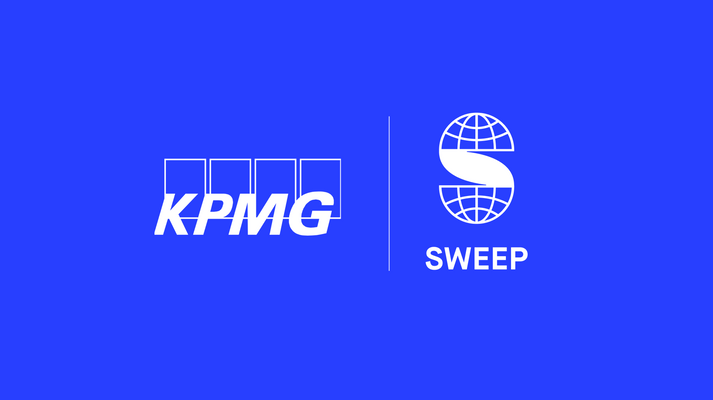Sweep for Corporates
Your one-stop-shop for carbon accounting and emission reduction.

Meet Sweep for Corporates
Sweep’s carbon accounting software supports you at every step of your sustainability journey, from gathering data, to creating a reduction strategy.

“Before Sweep, a person with the patience of an angel had to deal with hundreds of emails and meetings, then manually enter data into spreadsheets. It’s confusing, especially when you work with thousands of suppliers.”

Res Witschi
Delegate for Sustainable Digitalization

“We invited all our team members to vote for their favorite projects. Sweep helped us to successfully and transparently engage them in our sustainability strategy.”

Nicolas Hunsinger
Director of Corporate Environmental Sustainability

“Sweep empowers teams to incorporate sustainability into our core business, and build meaningful collaborations between innovators and changemakers.”

Helen Nwosu
VP of Social Impact
Sweep is your one-stop-shop for carbon accounting and emissions reduction.
Get started quickly

Get a base understanding of your company’s emissions, using the data at your disposal.
Quickly identify your ‘hotspots’
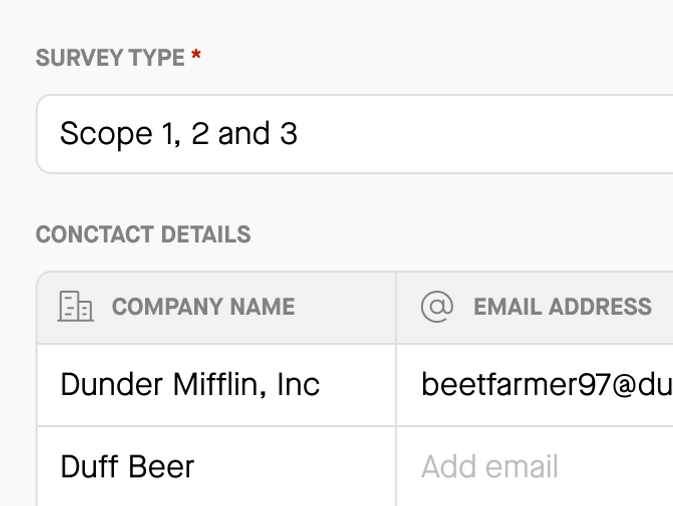
Identify emission hotspots, thanks to CDP-based benchmarks and take reduction action.
Work collaboratively
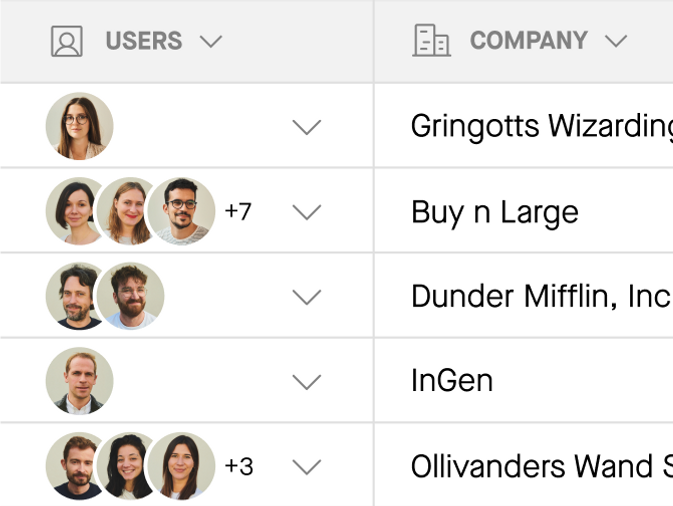
Engage your suppliers in your climate journey. We use surveys for efficient data gathering.
Simulate reduction pathways
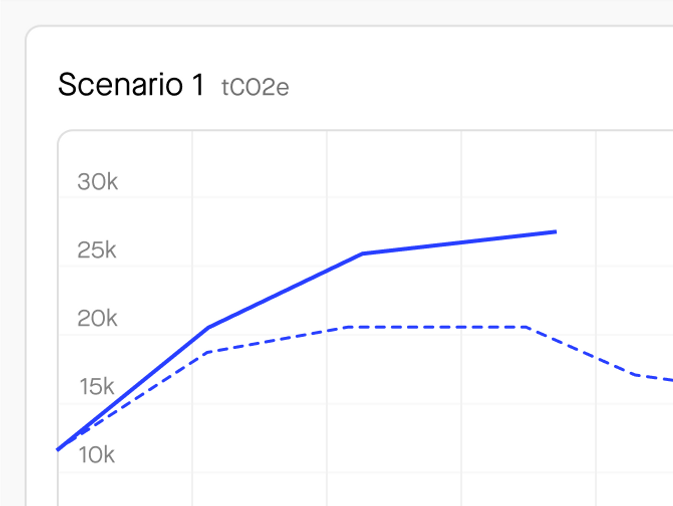
Test the impact a specific activity will have on your footprint, and make informed decisions.
Monitor progress
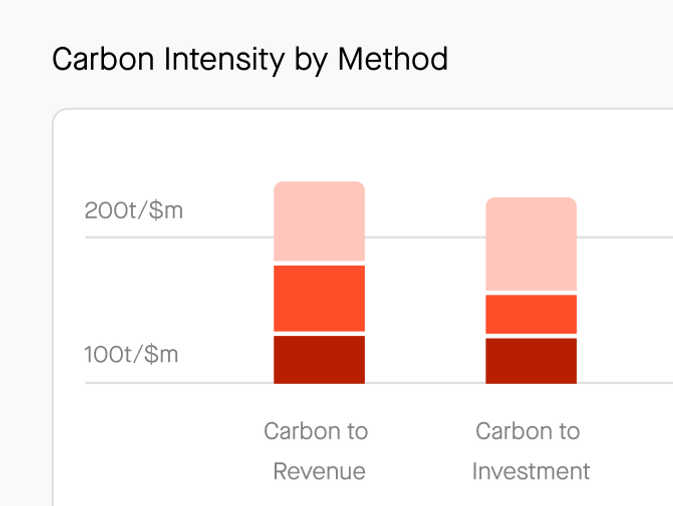
Our dashboard provides you with a real-time view of your progress towards your climate targets.
Monitor progress

Our dashboard provides you with a real-time view of your progress towards your climate targets.
Get on-track
Sweep has everything you need to be on-track with your ESG regulatory requirements. We also have a robust platform to support you on your decarbonization journey. See all features on our Platform page.
Backed by carbon expertise
Sweep is built to comply with leading international accounting standards.
Built for emission data you can trust
💯 Completeness
Help your suppliers measure all their required emissions.
🔐 Data security
We’re SOC2 compliant and ISO 27001 certified. Learn more about security
🔍 Transparency
Keep a clear audit trail, with documents and descriptions for your data stored right in Sweep.
🧭 Accuracy
See where all your supply chain data comes from. And improve it with a scoring system.
🎛️ Consistency
Use consistent methodologies, like the GHG Protocol, for meaningful emission tracking over time.
Our customers are making a difference
Here’s how we’re building a cleaner future together.














Materials
Explore our materials to learn more about taking effective climate action
Carbon accounting, also known as greenhouse gas (GHG) accounting, involves calculating the amount of carbon dioxide emissions your company produces. Essentially, it’s a calculation of your carbon footprint. It's also the first step in taking impactful climate action.
The best method for establishing a baseline measurement for your company’s emissions depends mostly on the data at your disposal. Below, we give you an overview of the four key ways to calculate your carbon footprint. Sweep helps you to select the right method based on your emissions data.

Below are four key methods of quantifying emissions:
Industry averages – These are sectoral emissions factors, or averages of the emission data submitted by organizations operating in a given sector. They can be used as a starting point for carbon footprint calculations in the absence of more accurate data.
Spend-based – This is based around the cost of purchased goods or services. The value is multiplied by a given emission factor to calculate an estimate of your total emissions. Spend-based emission factors are derived from an industry average of emission levels usually at a national level. This means they aren’t super accurate. On the plus side, spend-based methodology is relatively simple to implement and can provide a useful approximation of your company's indirect emissions.
Supplier-based – As this is primary data, it is the most accurate form of Scope 3 accounting. It involves tracking the emissions from individual suppliers, and then using that data to calculate the emissions associated with your company's purchased goods and services.
Hybrid – The hybrid method uses a mix of the above methodologies. It usually presents a fairly accurate picture of your total emissions, but it can be complex and resource-intensive to implement.

Scope 3 emissions cover all indirect emissions that occur in your value chain, including both upstream and downstream activities. This includes emissions from purchased goods and services, transportation and distribution, use of sold products, waste generated, and employee commuting.
According to data from the CDP, a company’s value chain emissions are on average 11.4 times greater than those of your own operations. As they form such a significant part of your overall business carbon footprint, it's essential to incorporate them into your carbon management and reporting, and to use them to drive climate action.
Acting on the carbon footprint of your supply chain can also bring you a range of business benefits. Here are just a few.
Smarter procurement decisions – Carbon accounting can help you determine which suppliers are committed to taking action on climate change. This enables you to set joint climate goals.
Cost reduction opportunities – It can help you identify carbon hotspots and introduce plans to improve energy efficiency across your value chain.
Your compliance future-proofed – New legislation is already coming into force in some countries which makes it compulsory to report on your supply chain emissions - and this is likely to become more widespread. If you start taking action now, you’ll increase your regulatory resilience.
Improved reputation – Taking climate action across your entire supply chain will show your partners, clients, and stakeholders that you’re truly committed to sustainability, which will boost your competitive advantage.
All this shows that taking a holistic approach to business sustainability can set you up for future success. And because our world is so interconnected through supply chains, the actions of a single company can have ripple effects throughout the global economy.

There are several important climate regulations that you should be mindful of. The Non-Financial Reporting Directive (NFRD) and the Corporate Sustainability Reporting Directive (CSRD) are two important pieces of legislation that require companies to disclose information on their energy use, water use, emissions, air pollution, and impact on the environment. The upcoming EU Sustainability Reporting Standards (ESRS) are set to apply to large and listed companies in the EU, as well as non-EU companies with a turnover of over €50 million in the EU.
In France, the Bilan d’Emissions de Gaz à Effet de Serre (BEGES) regulation applies to companies with over 250 employees and emitting more than 10,000 tons of CO2 per year.
In the UK, there are two key regulations in place: the TCFD-aligned disclosure regulations and the Streamlined Energy and Carbon Reporting (SECR) policy. The TCFD-aligned disclosure regulations encourage companies to report on Scope 3 emissions, but it is not mandatory. On the other hand, the SECR policy requires companies with over 250 employees or £36 million in revenue to report on their energy consumption and Scope 1 and 2 emissions.
Not sure which regulations apply to you or how to comply? Sweep can help.


Ready to get your corporate emissions on-track?
Get in touchTrack, report and act
Sweep helps you get your carbon on-track
Sign up to The Cleanup, our monthly climate newsletter


© Sweep 2024



